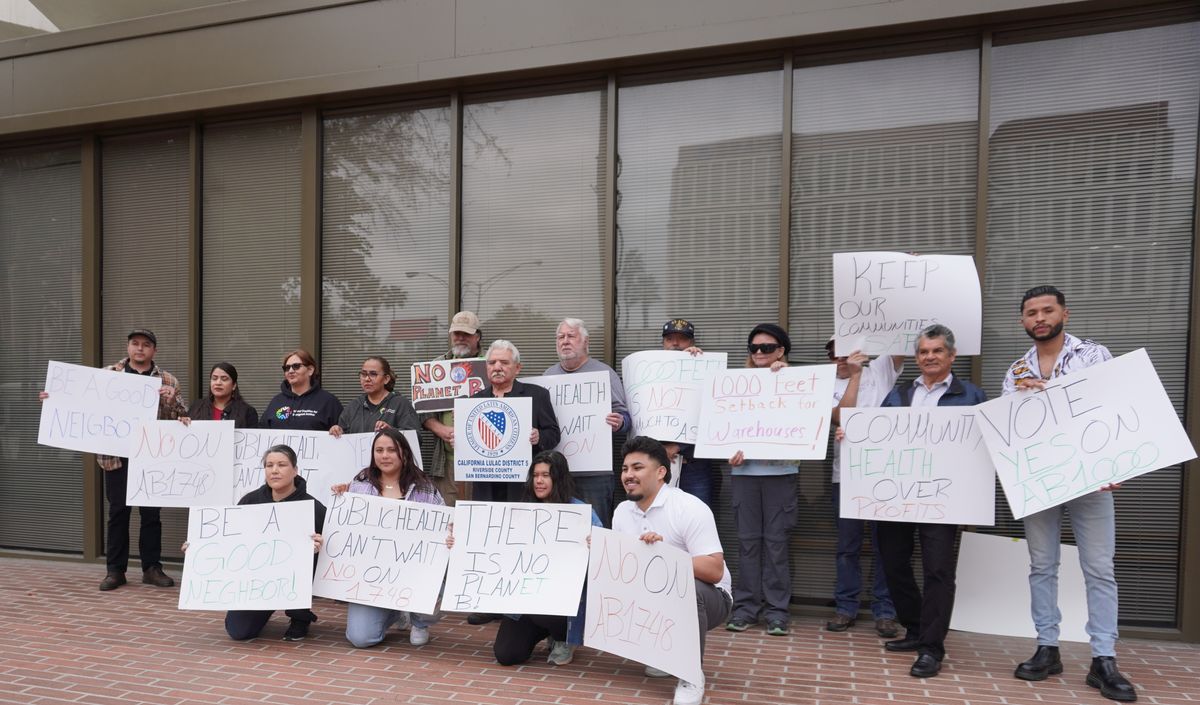Tale of two bills: Proposed warehouse legislation sparking challenges, opposition from freight communities and business groups

As residents of Riverside and San Bernardino counties question the benefits of the warehouse boom, California Assembly Majority Leader Eloise Gomez Reyes (D-Colton) and Assemblymember James C. Ramos (D-Highland) are both proposing bills to regulate their construction.
AB1000, otherwise known as the Good Neighbor Policy, is the bill proposed by Majority Leader Reyes. The bill will address the planning and construction of large warehouses and logistics centers across the state, permitting local governments to approve the construction of an industrial facility over 100,000 square feet when they are at least 1,000 feet from “sensitive receptors” like homes, child daycare centers, schools and hospitals.
However, AB1000 will also permit local governments to reduce the distance of sensitive receptors from industrial facilities to 750 feet if those projects incorporate standards related to “zero-emission energy, zero-emission vehicles, transportation infrastructure” and operation provisions targeted to protect nearby neighborhoods.
“The development of industrial facilities should not come at the detriment of the health, wellness and quality of life of the community,” said Reyes in a statement. “AB 1000 proposes a fair approach that will not only protect communities, but also offer a chance for a project to show its commitment to being a good neighbor. The status quo is not working for many of our most vulnerable residents and we must find a better way to manage these large projects in order to move California forward.”
In contrast, Assemblymember Ramos is proposing bill AB1748, a measure that allegedly builds on a legal settlement between the City of Fontana, the Sierra Club San Gorgonio Chapter and California Attorney General Rob Bonta. The bill is supported by the California State Council of Laborers and the Inland Empire Economic Partnership.
“AB1748 is a balanced approach to warehouse siting by allowing local jurisdictions to develop policies for their communities or follow the model set out last year after vigorous debate and hard won compromise,” Ramos said. “It addresses the need to mitigate vital health concerns important to all of us while protecting critical product supply chains around the globe, nation and state. We saw what happens when ports and other transportation hubs are stalled for products such as baby formula, medicine, food products and building materials are held up.”
Ramos’ warehouse bill is cause for concern for groups like the Center for Community Action and Environmental Justice (CCAEJ). AB1748 shortens the distance from warehouse and industrial facilities from 1,000 feet to 300 feet, which one advocate says falls short of what environmental justice communities need.
“The reason why this is dangerous is because we already have cities that have their own ordinances that do not do enough to protect our communities,” said Joaquin Enrique Castillejos, an organizing coordinator with CCAEJ. “One example is Fontana.”
According to Fontana’s sustainability standard, the maximum distance required between warehouses, logistics centers and sensitive receptors is 20 feet.
Castillejos explained that while officials representing the City of Fontana consider its ordinances pertaining to warehouses to be “one of the most sustainable ordinances in the state,” the community disagrees.
“In the community's eyes, it still does not do enough,” Castillejos said. “It still allows warehouses to be built next to schools, because the ordinance only calls for a 20 foot buffer between the docks of warehouses and sensitive receptors.
“Under AB1748, an ordinance like Fontana’s would be valid and would be enough to stay under that bill. And under AB100 we have a much higher standard to protect our communities, which is 1000 feet from the property line [of warehouses].”
Inland Action, a nonprofit composed of local development agencies, corporations and business groups such as Amazon, BNSF, Hillwood Investments and the Inland Valley Development Agency, has expressed opposition to AB1000, unless it’s amended, and is considering supporting AB1748.
“The definition of sensitive receptors in [AB1000] is too broad and lacking in nuance,” reads a statement posted on their website. “In addition, this bill fails to properly consider local land use control, creating a one-size-fits-all solution which may have disastrous consequences for the region’s economy.’”
